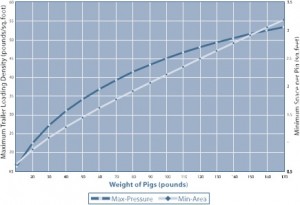Code of Ethics, Handler Training and the Law
Humane handling of livestock is a top industry priority. Many firms within the pork industry have established their own pig handling standards, many of which are even higher than those spelled out in federal and provincial legislation.
Leading trucking firms, insurance companies, assembly yards, hog farms and abattoirs insist their employees and customers follow codes of ethics and practices. Some provide their staff with training courses in proper and responsible livestock treatment.
The Animal Care Act is the basic law for all animal handling and care activities in Manitoba.
The regulations under this Act recognize the Recommended Code of Practice for the Care and Handling of Farm Animals: Pigs as the legally required standard for pig handling. Codes of practice are meaningless if they are considered just words on paper. The real code of conduct is our recognition of our responsibility as livestock producers for our animals’ health, comfort and well-being. Proper procedures for handling emergencies are outlined in Appendix B.
Appendix A.
Minimum Space Allowance Cull Pigs and Piglets
Reduce loading density to 75% of maximum for hot humid weather conditions. Market hogs travelling 2-3 hours will prefer to stand; on longer hauls they prefer to lie down and rest. For slaughter hogs travelling long distances, a loading density of 52 lbs./ft 2 allows for the pigs to lie down simultaneously. Thin animals require more space than finished animals of the same weight.
Appendix B. Emergency Procedures
- Naturally, the rescue and care of injured persons comes first.
- If the rescue of people is involved, avoid using sirens and lights near live animals as much as possible.
- Deal with loose, mobile animals first. These animals will be frightened and disoriented. They will be unpredictable and will react instinc- tively by running or fighting. If possible, allow them to calm down before trying to move them. Always keep an escape route for yourself. Do not shout or wave arms wildly and do not approach animals from directly in front unless you must protect an injured person. Once loose animals are quiet, move them to a safe area slowly and in a group. They may be temporarily penned with portable fencing, trucks, etc.
- Deal with conscious, badly injured animals next. Keep people away. Injured animals are less likely to struggle to their feet if left alone. To quiet a struggling injured animal which is lying down, place a blanket or jacket over its eyes, leaving the nostrils exposed and press down lightly on the neck just behind the head with a knee. Talking to the animal in a calm, quiet voice may help.
- Comatose animals are not aware of any pain and may be left for treatment last. Animals lying down with seizures or those paddling their legs may have serious head injuries. Unless these animals start to lift their heads or try to rise, they may be left until time is available to deal with them.
- Once assistance arrives:
- Assign someone to watch loose animals.
- Advise police if assistance such as veterinarians, department of agriculture staff or humane society officers may be required.
- Notify trucking company dispatchers, owners and/or receivers to obtain direction. Arrange to have surviving animals moved to a safe location.
- Seriously injured animals must be examined by a veterinarian if possible. Animals in serious pain or with untreatable injuries may need to be euthanized.
Adapted from the Recommended Code of Practice for the Care and Handling of Farm Animals, Transportation, Agriculture Canada, Appendix 3.



Recent Comments